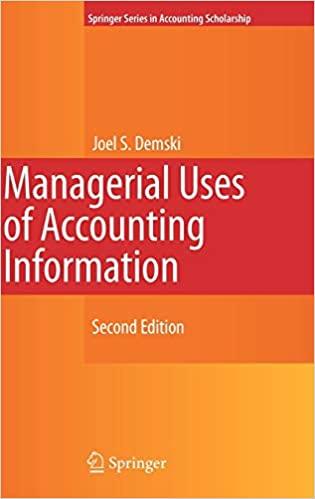9. cash flow estimation We now find Ralph managing a two product firm, Ralphs LP, with constrained...
Question:
9. cash flow estimation We now find Ralph managing a two product firm, Ralph’s LP, with constrained capacity. The production process consists of fabrication and assembly departments. A service group that supplies maintenance, minor engineering, material handling, etc. to these two departments is also present. Let q1 and q2 denote the quantities of the two products. The fabrication department is constrained as follows:
2q1 + q2 ≤ 300. Think of this as expressed in hours of direct labor.
The assembly department is constrained via q1 + 3q2 ≤ 600. This, too, should be thought of in terms of direct labor hours. (The data are scaled for convenience.) Ralph recognizes nine cost pools. Their nature and LLAs, in slightly aggregate form, are detailed below. (Selling and administrative is the only period cost category.) Also, the respective selling prices are 600 and 800 per unit.
selling and administrative S&A = 5,000 + 3q1 + 5q2 direct labor in fabrication DLf = 22(2q1 + q2)
direct labor in assembly DLa = 35(q1 + 3q2)
direct material DM = 120q1 + 200q2 overhead in fabrication OV f = 5,000 + DLf overhead in assembly OV a = 6,000 + 3DLa manufacturing service group MS = 2,000 + DLf + .2DLa
(a) Determine an optimal production plan for Ralph
(b) Now consider expansion of the fabrication department, increasing its capacity from 300 to 450 units (scaled in direct labor hours). The original LLAs remain valid under such expansion.
Determine the incremental cash flow from operations that would follow from such an expansion. (Assume variable costs are cash expenditures.)
(c) Ralph next concludes this increased activity will reshape the cost structure in the manufacturing service group. Automation will result in an LLA of MS = 12,000, with no variable component whatever. Assuming all of the service group costs (both with and without expansion) are cash expenditures, determine the incremental cash flow from operations associated with the proposed expansion.
(d) Ralph anticipates the expansion will be viable for 3 years. For modeling purposes of this sort, Ralph treats all cash flow as occurring at the end of the respective period. Ralph’s marginal tax rate is 40%, and positive taxable income from other sources will be present if any of the periods result in a negative tax income. The expansion will cost 30,000 (an immediate outlay).
For tax purposes, MACRS will be used (requiring depreciation of 33.33%, 44.45%, 14.81% and 7.41% over a 4-year horizon). No salvage value or costs are anticipated. In addition, minor plant modification will result in an expenditure of 5,000. This will occur at the start of the project (when the investment outlay is made), and will be expensed for tax purposes at the end of the first year. Determine whether this is an attractive expansion proposal. Assume a 9% cost of capital.
(e) Briefly speculate on how risk, learning, competition, and technology change might affect your analysis.
Step by Step Answer:






